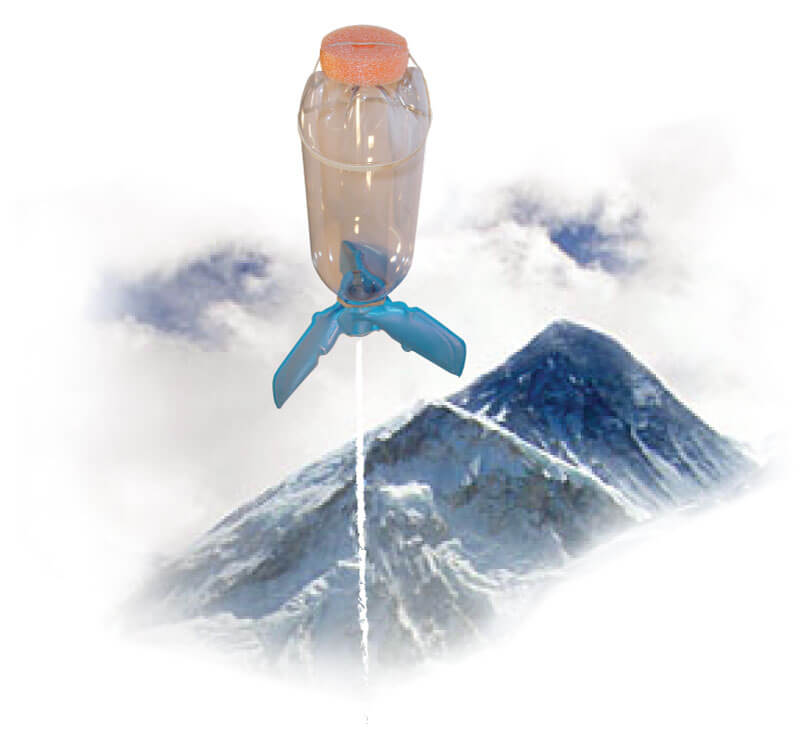Whether you’re making your own water rocket using our DIY homemade rockets, or have purchased one of our professional home-use rockets, you’ll find that our designs offer you the ability to really fly high. Why? Why do these designs fly so incredibly high? Here are four water rocket tips that will show you why! The best way to understand why our water rocket designs work so well, is to take a look at why most other designs fail. So let’s start there.
Water Rocket Tips #1: Open Neck Nozzles
Most water rockets are made using the open neck of the pop bottle as the exhaust nozzle. Although this is convenient, the large nozzle is grossly mismatched to the job requirements.
With most water rocketry, the real job is to lift a pop bottle (which weighs only 50 grams) into the air as high as possible. The open neck nozzle, with its thrust of about 55 pounds (25,000 grams), it has 40 times as much thrust as is required, and expends its energy 40 times faster than required. .
And in rocket science, one bad design decision always leads to many more in order to compensate. This choice in particular results in excessive acceleration and velocity, which each have some very wasteful side effects.
At AntiGravity, we take a different approach. Each very simple nozzle is sized exactly to the requirements of the job.
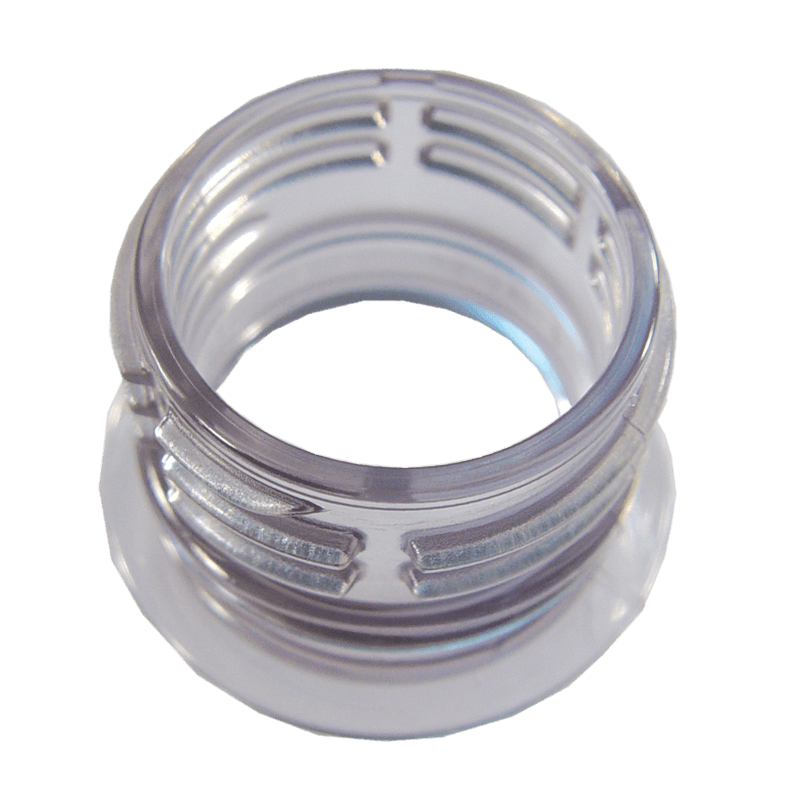
Building a rocket with a nozzle that’s too big is like using a bulldozer to clean up the kitchen. Sure, you’ll get the job done, but why risk all those dishes?
All of AntiGravity’s rockets use nozzles that are sized to fit the job requirements. They are much, MUCH smaller than the open neck of the bottle.
Below are the four different sizes of AntiGravity nozzles, each precisely cut, centered and sized perfectly for the longest-lasting thrust and the least air friction.
Just LOOK at:
- the tiny nozzle for the upper stage of the 2-stage rocket
- the medium nozzle for the Skylab single stage
- the larger nozzle for the Payload Rocket
- and the very large nozzle for 2-stage booster!
Each nozzle has just the right amount of thrust to lift your water rocket as high as it can possibly go!
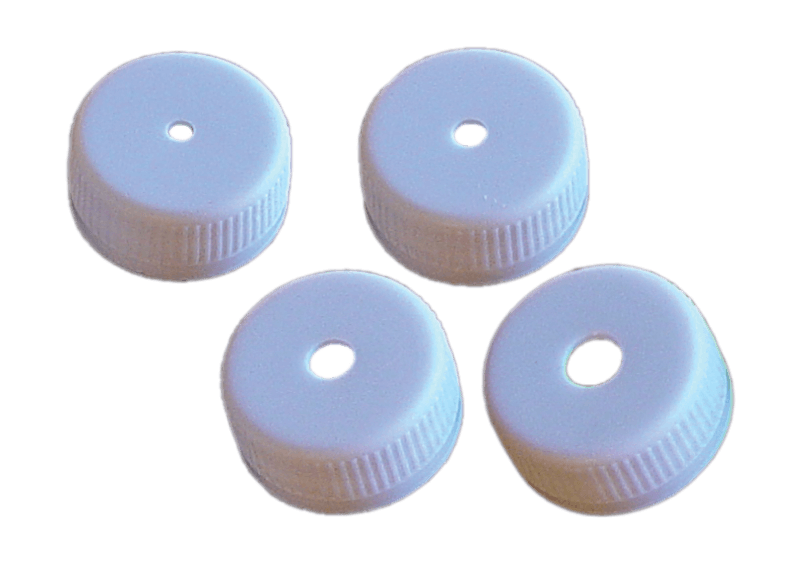
Water Rocket Tips #2: Too Much Speed – Not Enough Endurance
When a rocket accelerates too quickly, everything on it has to be much stronger and heavier.
And when a rocket travels too fast, it encounters much more air friction than when it travels slowly.
With its much-higher velocity, the open-neck rocket has about ten times the air friction of the much slower-moving AntiGravity rockets.
Air friction increases as the square of the velocity (scientific jargon for those of you who are easily impressed), so higher speeds eat up most of your rocket’s energy by heating up the surrounding air.
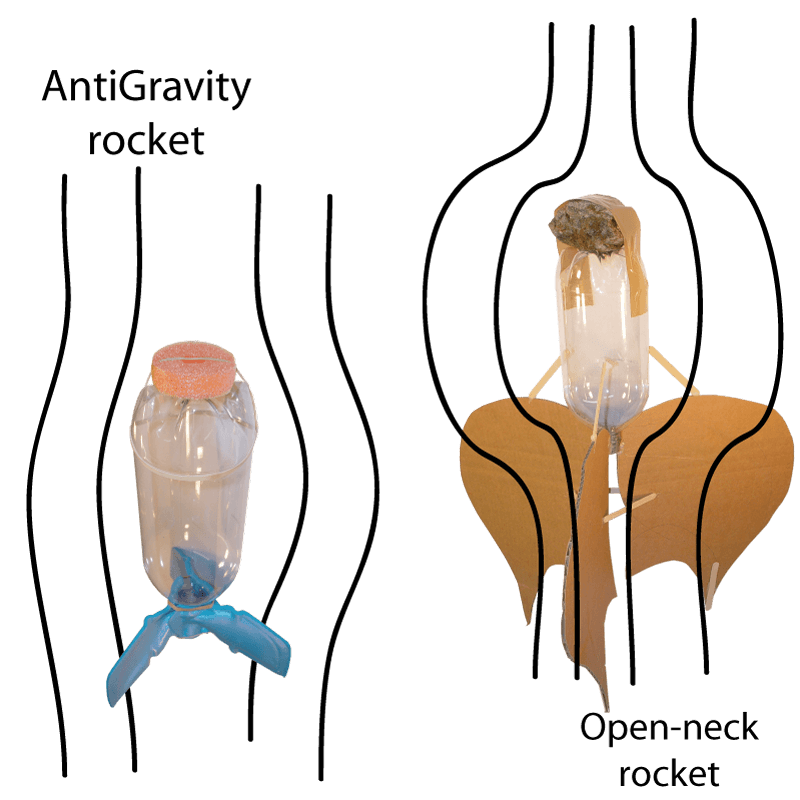
Just look at how HOT that air is on the right!
Okay, okay – it’s obvious that the air doesn’t actually look hot. But trust us, it is.
The open-neck rocket has a burst of energy that is spent very quickly, somewhat like a pop gun. Watching a pop-gun go pop can be pretty exciting, for about a tenth of a second.

As exciting as that sounds, there has to be a better way. AND THERE IS! AntiGravity’s smaller nozzles make the thrust last much longer, and the rocket stays around long enough for you to see it struggling against gravity. Climbing. Accelerating. And winning!
Each AntiGravity rocket is powered almost all the way to the top of its flight, with an impressive vapor trail that makes it look and sound like it’s going into orbit.
Altitude, shmaltitude! While high flying rockets are neat, excitement is what we’re really after, isn’t it!? After all, a rocket isn’t that exciting once it’s out of view (though ours still fly exorbitantly high).
We want something to inspire us to go on to become real rocket scientists, engineers and astronauts! Something to make us dream of a future in outer space!
We want rockets that fly like real rockets. Now for more water rocket tips!
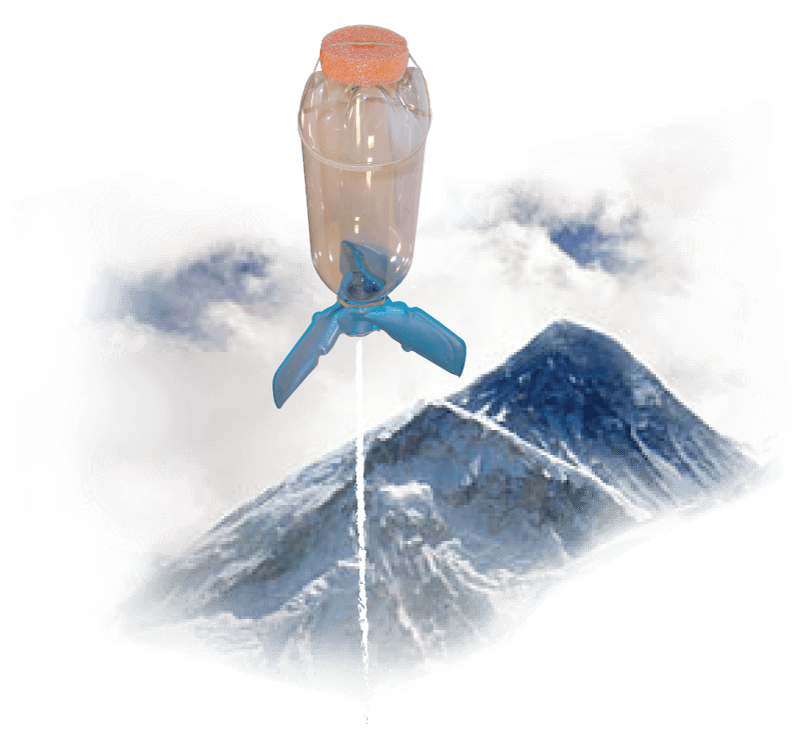
Water Rocket Tips #3: The Rockets Weigh As Much As An Elephant
When there is too much air friction, people try to compensate by adding more weight to the rocket so it will “coast” better.
The open-neck rockets often weigh more than one pound (454 grams) empty. The extra mass adds no energy and is much harder to lift. And the rocket will have to drag along about a kilogram of water!
Plus, you’d hate to get hit on your noggin by a pound of rocket, or an elephant for that matter.

What advantages does a lighter rocket have?
AntiGravity rockets weigh as little as 60 grams empty and only need to lift 100 grams of water. There is no energy spent lifting useless weight.
Every gram of mass on an AntiGravity rocket is there to help it go higher! And come down slower!
Let’s face it. Given the choice of having an elephant fall from the sky toward you or a nice soft bunny, which would your choose?
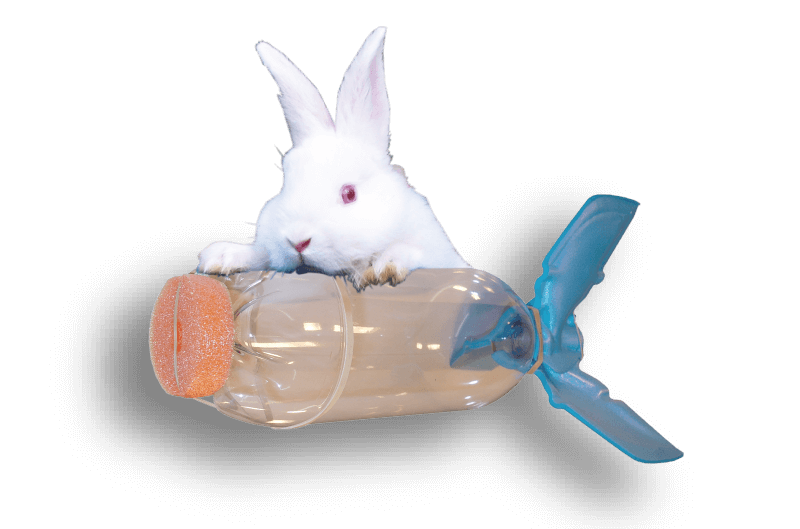
If you ever have your face near one of those heavy rockets, or God forbid, over it – you’re hooped! It’ll knock you flat out.
With an AntiGravity rocket, even if the rocket hits you DIRECTLY you’ll be fine.
The antigravity rocket moves slowly (it takes about 60 feet up to reach 100km/hr.) so you can SEE the rocket struggling against earth’s gravitational field, and overcoming air friction through the thick atmosphere – it’s a thrill to watch.
PLUS there’s a wonderful vapor trail all the way to the top of the flight.
These benefits apply to our DIY homemade water bottle rockets too. You can make one of these here if you choose (and it only takes a few parts to make your rocket).
Water Rocket Tips #4: Pointy Cones Of Death
“Do you really need that pointy cone at the top of your water rocket?” – so called ‘experts’ are always telling you to turn your rocket into an arrow and put a pointed cone on the front.
I turn your attention to the 747 airplane by Boeing. It goes 600mph through the atmosphere. How pointy is it?
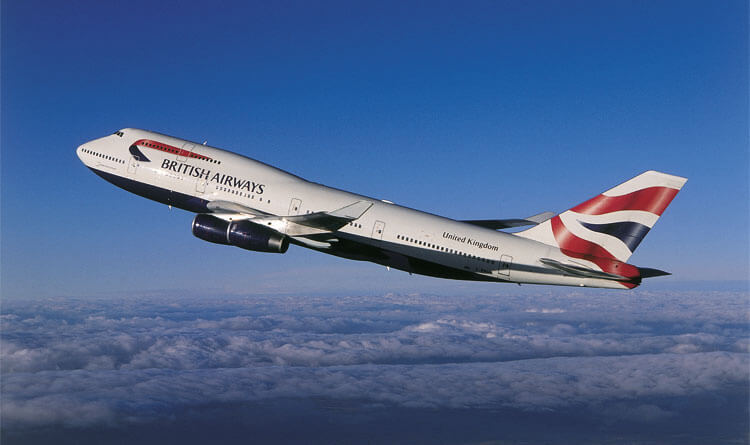
…it’s not very pointy at all. You couldn’t even have a good shish-kabob on that thing.
As it turns out, you only need a sharp, pointy front if you’re going supersonic. Otherwise, the pointy front slows you down. It “rips” the air.
Instead, the air should just calmly fluff around the rocket. If you’re going subsonic speeds (less than 700mph), the teardrop shape is the most efficient for air friction. Only if you’re going supersonic (700mph) do you need that pointed point.
Why are people suggesting to put a pointy tip on your subsonic rocket? Maybe once they read this they will finally get the point!
